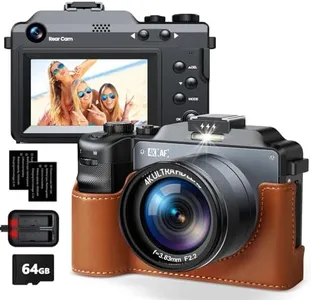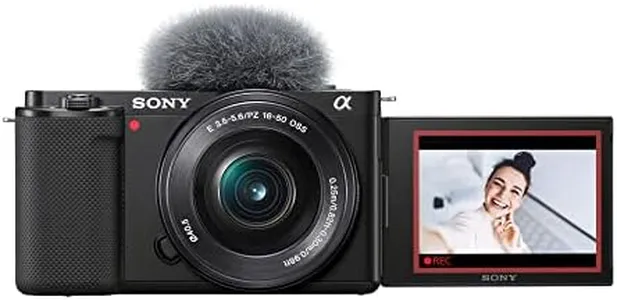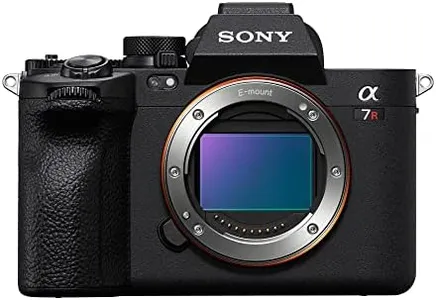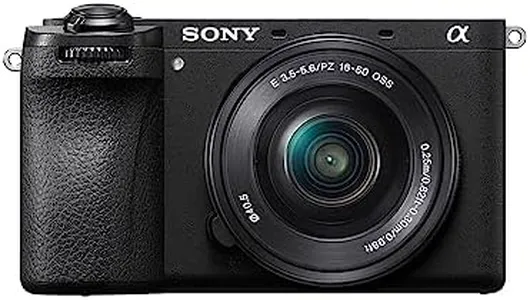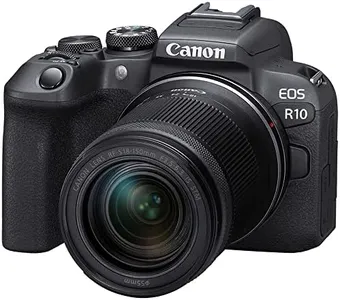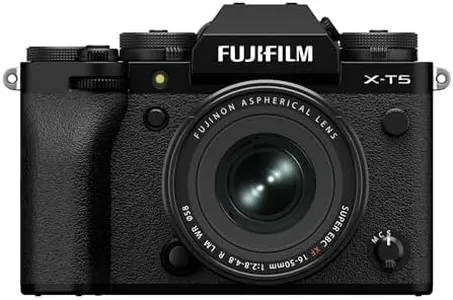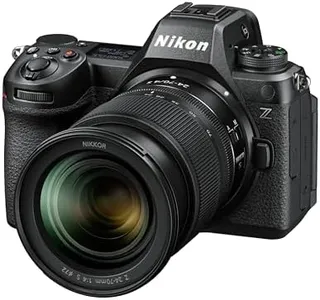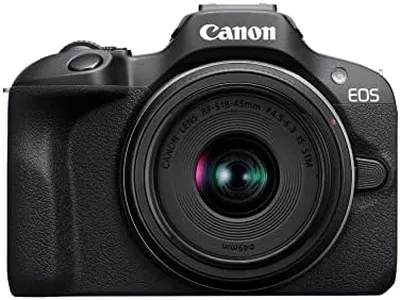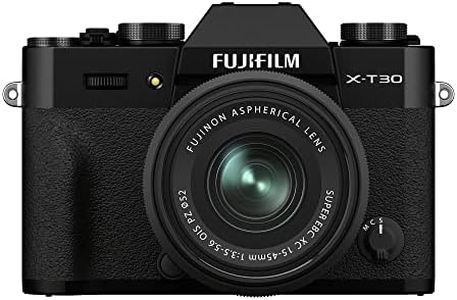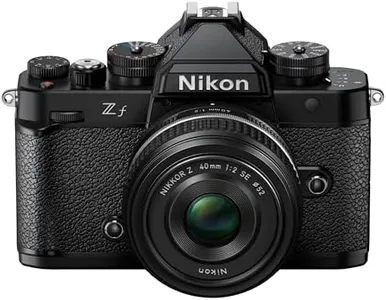10 Best Compact Mirrorless Cameras 2025 in the United States
Our technology thoroughly searches through the online shopping world, reviewing hundreds of sites. We then process and analyze this information, updating in real-time to bring you the latest top-rated products. This way, you always get the best and most current options available.

Our Top Picks
Winner
Canon EOS R50 Mirrorless Camera RF-S18-45mm F4.5-6.3 is STM Lens Kit, 24.2 Megapixel CMOS (APS-C) Sensor, 4K Video, Hybrid Camera, Photo and Video, Vlogging, Content Creator, RF Mount, Black
Most important from
1236 reviews
The Canon EOS R50 Mirrorless Camera offers a high-quality 24.2 Megapixel CMOS (APS-C) sensor, making it capable of capturing stunning images with great detail. Its compatibility with Canon's RF mount lenses provides flexibility for different photography needs. The advanced autofocus system with 651 AF zones and subject tracking using deep learning technology ensures sharp and precise focus, which is particularly useful for both photo and video applications.
For content creators and vloggers, the camera's 4K video capabilities at up to 30 fps, along with Full-HD high-frame rate movie recording, provide excellent video quality. The 2.36-million-dot electronic viewfinder and vari-angle touchscreen make composing shots from various angles easier and more intuitive. Image stabilization modes help in capturing clear images even in challenging conditions.
Connectivity options like built-in Bluetooth and Wi-Fi allow for easy transfer and remote control using the Canon Camera Connect app. There are some limitations, such as the relatively modest maximum focal length of the included RF-S18-45mm lens and the maximum aperture of f/4.5, which might not be ideal for low-light conditions. Despite these minor issues, the Canon EOS R50 remains a strong choice for both amateur and professional photographers, especially those focused on content creation and vlogging.
Most important from
1236 reviews
Sony Alpha ZV-E10 - APS-C Interchangeable Lens Mirrorless Vlog Camera Kit - Black
Most important from
1933 reviews
The Sony Alpha ZV-E10 is a versatile and feature-rich compact mirrorless camera designed primarily for vloggers and content creators. It boasts a large 24.2MP APS-C Exmor CMOS Sensor and uses the fast BIONZ X processor, providing high-quality images and excellent performance. The 4K video capability, derived from 6K oversampling with no pixel binning, ensures sharp and detailed video recording.
The camera's Product Showcase Setting and Background Defocus button make it easy to create professional-looking videos by quickly adjusting focus and background blur. Live streaming is straightforward with a single USB connection, making this camera user-friendly for online content creation. The camera supports a variety of connectivity options, including Bluetooth, Wi-Fi, and USB, ensuring seamless integration with other devices. It is also compatible with Sony E-Mount lenses, offering flexibility for different shooting scenarios.
On the downside, the camera relies on digital image stabilization, which may not be as effective as optical stabilization in certain situations. The battery life, at 1020 milliamp hours, might require frequent recharging for prolonged use. Additionally, while it has a range of autofocus settings, it may take some time for new users to get accustomed to the various modes and settings. In summary, the Sony Alpha ZV-E10 is an excellent choice for vloggers and video content creators looking for a high-quality, user-friendly camera with strong video capabilities and flexibility in lens options.
Most important from
1933 reviews
Sony Alpha 7R V Full-Frame Mirrorless Interchangeable Lens Camera
Most important from
212 reviews
The Sony Alpha 7R V Full-Frame Mirrorless Camera stands out in the compact mirrorless camera category with its impressive 61.0 MP full-frame back-illuminated Exmor R CMOS sensor, which offers exceptional image quality. Its advanced BIONZ XR engine ensures fast processing speeds, making it suitable for both photography and videography enthusiasts who demand high performance. The camera also excels in video capabilities, supporting up to 8K 24p/25p and 4K 60p (50p) recording, which is ideal for filmmakers looking for high-resolution video options.
Additionally, the next-generation autofocus system with Real-time Recognition autofocus driven by deep learning AI enhances precision and reliability in tracking subjects. The digital image stabilization feature helps in capturing smooth and stable footage, although it may not be as effective as optical stabilization in some scenarios. The camera is compatible with Sony E-mount lenses, offering a wide range of lens options for different shooting needs. With a weight of just 1 pound and compact dimensions, it is highly portable, making it a good choice for photographers on the go.
However, one potential drawback is the battery life, which might require carrying extra batteries for extended shooting sessions. Connectivity options are not detailed but considering the model's advanced nature, it likely includes Wi-Fi and Bluetooth for easy file transfer and remote control. In summary, the Sony Alpha 7R V is a powerful and versatile option for those seeking high-resolution images and advanced video capabilities in a compact mirrorless camera.
Most important from
212 reviews
Buying Guide for the Best Compact Mirrorless Cameras
Choosing the right compact mirrorless camera can be a rewarding experience, as these cameras offer a great balance between portability and high-quality image capture. To make an informed decision, it's important to understand the key specifications and how they align with your photography needs. Here are the main specs to consider and how to navigate them.FAQ
Most Popular Categories Right Now
